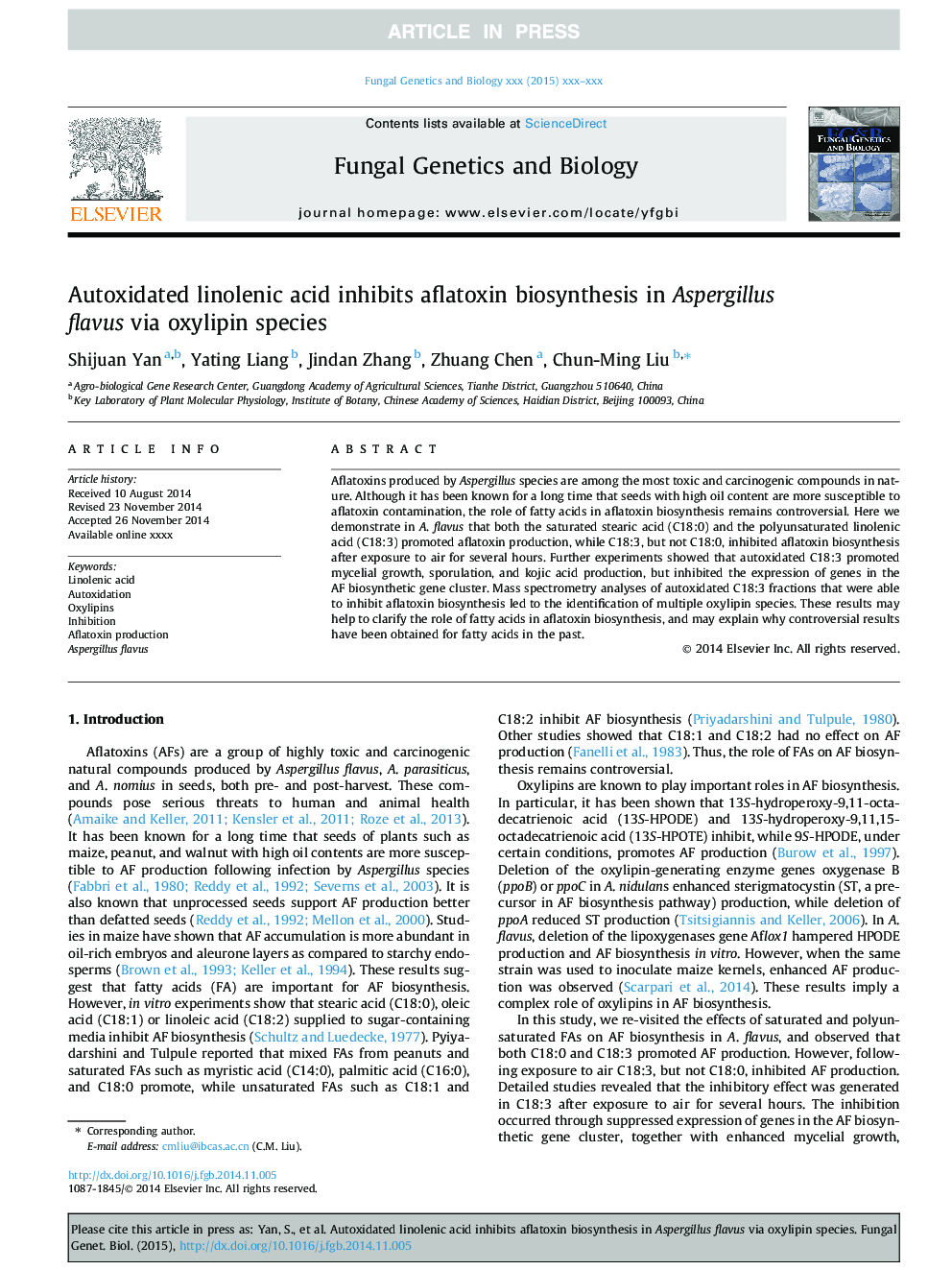| Article ID | Journal | Published Year | Pages | File Type |
|---|---|---|---|---|
| 8470696 | Fungal Genetics and Biology | 2015 | 9 Pages |
Abstract
Aflatoxins produced by Aspergillus species are among the most toxic and carcinogenic compounds in nature. Although it has been known for a long time that seeds with high oil content are more susceptible to aflatoxin contamination, the role of fatty acids in aflatoxin biosynthesis remains controversial. Here we demonstrate in A. flavus that both the saturated stearic acid (C18:0) and the polyunsaturated linolenic acid (C18:3) promoted aflatoxin production, while C18:3, but not C18:0, inhibited aflatoxin biosynthesis after exposure to air for several hours. Further experiments showed that autoxidated C18:3 promoted mycelial growth, sporulation, and kojic acid production, but inhibited the expression of genes in the AF biosynthetic gene cluster. Mass spectrometry analyses of autoxidated C18:3 fractions that were able to inhibit aflatoxin biosynthesis led to the identification of multiple oxylipin species. These results may help to clarify the role of fatty acids in aflatoxin biosynthesis, and may explain why controversial results have been obtained for fatty acids in the past.
Related Topics
Life Sciences
Biochemistry, Genetics and Molecular Biology
Cell Biology
Authors
Shijuan Yan, Yating Liang, Jindan Zhang, Zhuang Chen, Chun-Ming Liu,
